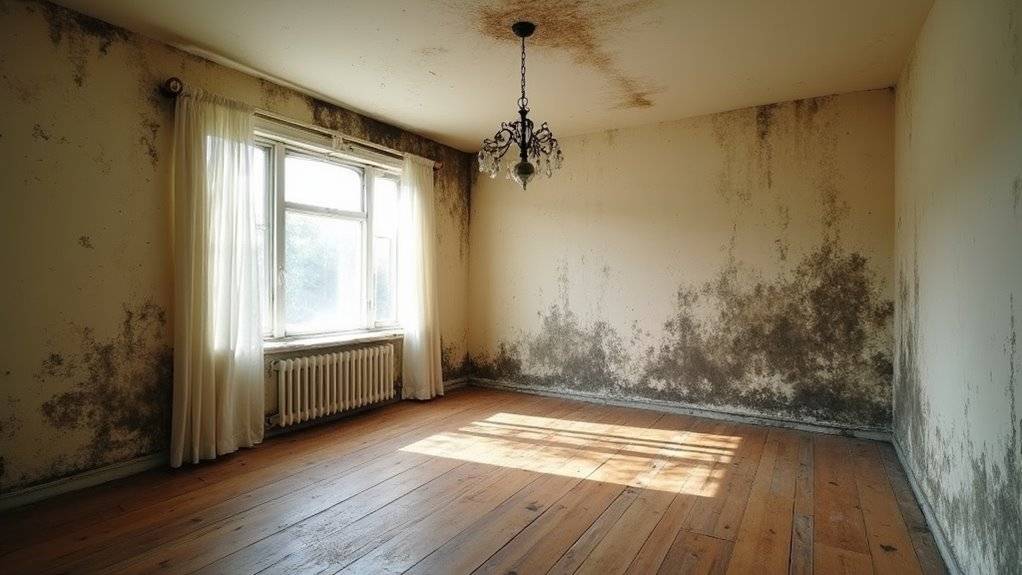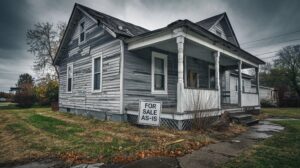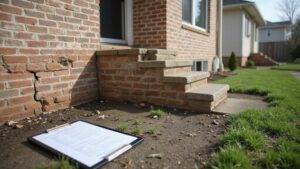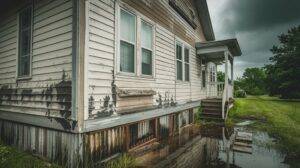Mold and water damage are issues many homeowners dread. These problems are hard to spot at first and can grow quickly. They often cause stress and lower your home’s appeal to buyers.
When buyers see signs of damage, they may walk away or offer much less money. Lenders and appraisers also notice these problems, making it harder to sell or refinance. The longer you wait, the worse the situation gets. Mold and water damage can lower your home’s value by up to 20%.
The good news is you can fix these problems before listing your home. Early repairs and prevention can save you money and protect your investment. This blog will guide you through fixing mold and water damage to keep your home’s value strong.
Key Takeaways
- Mold and water damage can reduce a home’s value by 15–20% or more due to diminished appeal and perceived neglect.
- Visible mold, stains, or musty odors discourage buyers and can lead to lower offers or failed sales.
- Most lenders may refuse financing for homes with unresolved mold or water damage issues.
- Appraisers factor in repair costs and risks, often lowering the property’s valuation accordingly.
- Proper repairs and documentation of remediation can help recover up to 80% of lost home value.
Understanding the Dangers of Mold in Homes
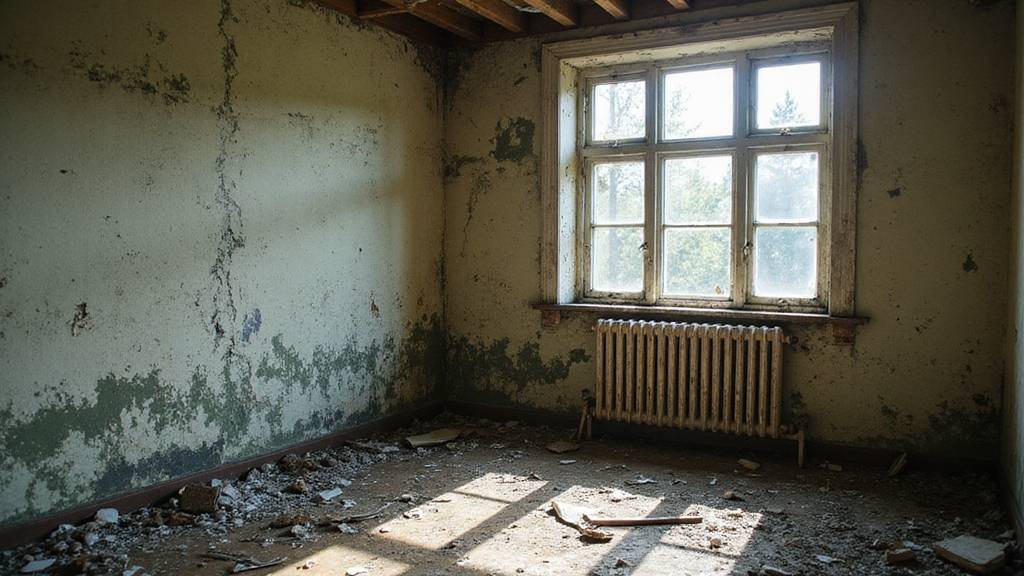
Mold in homes can cause health problems and damage to buildings. If left untreated, mold can make people sick and harm your house. Mold is not just a small issue.
People living with mold may develop allergies or breathing trouble. Mold spores can make asthma worse, especially for children. If you have these symptoms, mold might be present.
Mold can also weaken walls and floors. This damage may lower your home’s value and require expensive repairs. The Centers for Disease Control and Prevention recommends removing mold quickly.
If you think you have mold, testing your air quality is important. Professional help can remove mold and keep your home safe. Early action will protect your family and your property. Professional mold inspection can determine the severity of the problem and guide effective remediation.
Common Sources of Water Damage
You’ll find that most water damage stems from leaking roofs and ceilings, burst pipes, or faulty appliance connections. Data from insurance claims show these issues account for a majority of costly repairs in residential properties. By identifying and addressing these sources early, you can reduce your risk of mold growth and protect your home’s value. Additionally, regular inspections can help detect hidden water issues before they escalate.
Leaking Roof and Ceilings
A leaking roof or ceiling means water is getting into your home. This can harm the structure and lower its value. If you see stains on your ceiling, it may be a sign of a leak.
Roof leaks are common and can cause serious problems. If left unfixed, they can reduce your home’s value by 10% or more. Buyers may offer less money or lose interest if they see water damage.
Ceiling stains can also mean there is hidden mold. Mold is expensive to remove and can cost thousands to fix. Insurance claims for roof leaks average around $8,000.
Regular inspections help catch leaks early. If you make repairs quickly, you can avoid bigger and more costly damage. Early action is the best way to protect your home.
Burst Pipes and Plumbing
Burst pipes are a common cause of basement flooding. They can damage floors, walls, and your belongings. Even small leaks can go unnoticed because pipes are hidden behind walls and under floors.
Corroded pipes are more likely to burst, especially in older homes. If you see rust or moisture on exposed pipes, you should check them. Professional plumbing inspections can help find hidden issues before they become serious.
Water leak detectors are useful, especially in basements. These devices can give early warnings if a leak starts. If you install detectors, you may prevent expensive repairs and protect your home’s value.
Faulty Appliance Connections
Faulty appliance connections can cause major water damage at home. Washing machines, dishwashers, and water heaters are common sources of leaks. Broken or loose connections often lead to slow leaks or sudden bursts.
Water heaters fail most often due to leaks or burst tanks. Poor maintenance or ignoring connections can increase this risk. Regular checks help prevent costly damage.
You should inspect supply hoses every six months for cracks or bulges. If you find damage, replace hoses right away. Braided stainless steel hoses last longer and are safer.
If any water lines feel loose, tighten them to stop drips. Replace all hoses every three to five years. Using smart leak detectors gives you early warnings about leaks.
Regular care and quick repairs can prevent most appliance-related water damage. If you act early, you can avoid bigger problems. Proper maintenance keeps your home safe and dry.
Identifying Signs of Mold and Water Damage
Mold and water damage can lower a home’s value. You should know how to spot these issues early. Look for signs before they become serious problems.
Check places where moisture collects, like basements, bathrooms, and under sinks. Stains, warped wood, or a musty smell may mean water or mold is present. If you see these signs, take action quickly. Early detection is crucial to prevent further damage and costly repairs, as well as to maintain your home’s market value. A trusted local business with experience in North County real estate can help evaluate and address these problems effectively.
Industry data shows that 30% of homes have water leaks. Mold can start growing within 24 to 48 hours after a leak. If you notice dampness or stains on walls and ceilings, consider a professional inspection.
Early detection helps you solve the problem and saves money. Acting quickly can protect your home’s value. Always stay alert and fix issues as soon as you find them.
How Mold Growth Lowers Property Value
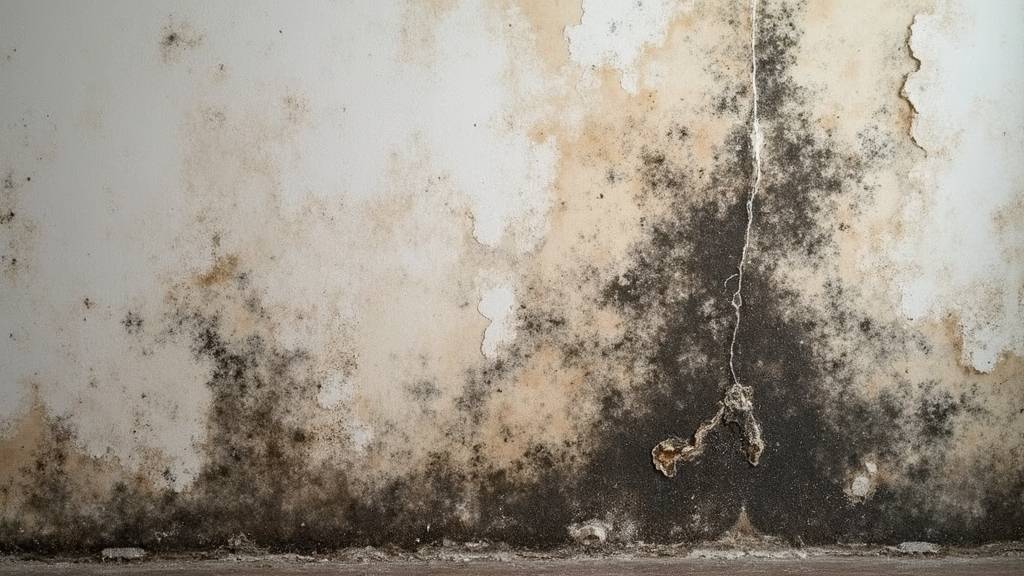
Mold growth lowers your property value by making your home less attractive to buyers. People worry about health problems and repair costs when they see mold. If a home has mold, its value can drop by 20% or more. Selling as-is means the property is not repaired, so mold issues can significantly impact offers.
Buyers might ask for a big discount or choose another house. Lenders may also refuse to finance homes with mold issues. Home inspectors will report mold, which weakens your ability to negotiate. If you wait to fix mold, the problem and cost will grow.
Additionally, proper documentation of mold inspections and remediation efforts can help you negotiate better terms. Fast action can protect your home’s value. You will also attract more interested buyers if your home is mold-free. Additionally, understanding the implications of selling as-is can help you decide whether to address mold issues before listing.
Structural Consequences of Water Intrusion
Water intrusion can damage a home’s structure and weaken its foundation. Prolonged moisture causes cracks and shifts in building materials. This can lead to costly repairs if not addressed quickly.
Sagging floors, warped walls, or sticking doors are signs of structural problems. These issues often mean water has affected the home’s stability. If ignored, the damage will only get worse.
Moisture also causes wood to rot and metal to rust. Concrete can break down when exposed to water for too long. Such damage lowers your property’s value.
Regular inspections help catch leaks or damp spots early. Focus on basements and crawl spaces where water often enters. If you find damage, contact a professional right away.
Prompt repairs will help protect your home’s foundation. Early action keeps repair costs lower and helps keep your home valuable. Taking care of water issues now preserves your investment.
Health Risks Associated With Mold Exposure
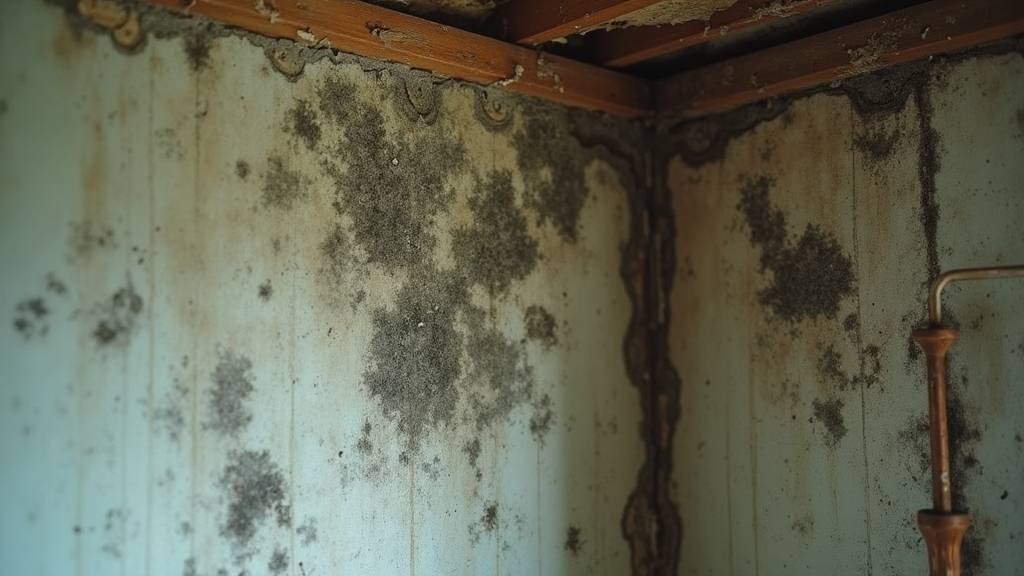
Mold in the home can cause health problems. People with allergies, asthma, or weak immune systems are most at risk. Mold grows when water gets into a building and releases spores into the air. Selling a house as-is can help homeowners avoid the ongoing costs and risks associated with mold damage.
These spores can cause coughing and breathing problems. Some people may have sneezing, skin rashes, or watery eyes. Those with weak immune systems may get infections more easily. The CDC says removing mold quickly lowers these health risks.
If you fix leaks and dry wet areas soon, mold is less likely to grow. Understanding legal restrictions and proper procedures can help prevent legal issues during sale transactions. You should call professionals if you cannot remove mold yourself.
Buyer Perceptions and Deal Breakers
When buyers spot signs of mold or water damage, their first impression often shapes the entire negotiation. Data shows that health concerns can quickly turn interested buyers away, reducing your pool of potential offers. To maintain influence, you’ll need to address these issues upfront and provide clear documentation of professional remediation.
Additionally, showcasing a fair cash offer and a straightforward selling process can help reassure buyers and keep negotiations moving forward. Being transparent about the condition of the property and any repairs made can build trust and demonstrate your commitment to a smooth transaction.
First Impressions Matter Most
First impressions are very important when selling a home. Buyers notice problems like mold or water damage right away. These issues can make them question the value and care of the property.
Visible mold or water stains can lower your home’s appeal by up to 15%. If buyers see these problems, they often assume the home needs more repairs. Many buyers will choose another home if they see signs of neglect.
Common warning signs include stains on ceilings, musty smells, or damaged paint and flooring. If you fix these issues before listing your home, buyers are more likely to feel confident. Professional mold removal and repair can help prevent lost sales.
Health Concerns Deter Buyers
Even small signs of mold or water damage can make buyers worry about health risks. Many buyers lose interest if they notice musty smells or stains. Mold exposure may cause breathing problems, allergic reactions, or worsen asthma, according to the Environmental Protection Agency.
Buyers are very concerned about allergens and asthma, which often leads them to reject a home. Odors or any visible mold make buyers uneasy and can reduce their interest. Regular inspections and quick fixes can help avoid these issues.
Surveys show over half of buyers would back out if they find mold. If you want to keep your home valuable, it is important to fix mold and water problems quickly. Taking these steps can reassure buyers that your home is safe.
Negotiation Leverage Shifts
Buyers use mold or water damage as strong leverage in negotiations. If there are visible issues, buyers quickly gain negotiation power. They may ask for price cuts or repairs before agreeing to close.
Lenders might lower the home’s value if there is damage. Appraisers often note the cost and risk of fixing mold or water problems. This can prevent you from getting a higher sale price.
Some buyers may back out if they see mold as a major problem. Many buyers will ask for repairs or professional mold removal before closing. Sellers should be ready for these requests.
You can regain some leverage by showing repair receipts and inspection reports. If you fix the problems, buyers may feel more confident. Clear proof of repairs can keep negotiations on track.
Knowing these points helps you plan your selling strategy. If you understand the buyer’s concerns, you can respond better. This approach can help you reach a fair agreement.
Impact on Home Inspection Reports
A home inspection report that finds mold or water damage can lower the value of a house. Buyers may lose interest or offer less money. Most buyers use inspection reports to decide if they want to buy.
If mold is found, buyers often ask for repairs or walk away. Sellers may need to fix problems before selling. These issues can delay or stop a sale.
Sellers can avoid surprises with pre-listing mold tests. Learning about water damage helps fix issues early. Clear records of repairs can reassure buyers and help keep a home’s value. Fair cash offers from local experts can also make the selling process easier and more reliable.
Insurance Challenges and Coverage Issues
You’ll find that many insurance policies have strict exclusions and limitations around mold and water damage, which can leave you with unexpected out-of-pocket costs. Insurers often deny claims if they determine the damage resulted from neglect or gradual leaks, rather than sudden events. To avoid premium hikes after filing a claim, review your policy details and address maintenance issues proactively before problems intensify.
Additionally, understanding damage and repair considerations can help you navigate the complexities of coverage and minimize financial surprises. Being aware of the insurance claim process can further facilitate a smoother resolution if damage occurs.
Policy Exclusions and Limitations
Most homeowners insurance policies do not fully cover mold or water damage. These risks are often excluded or have strict limits. Insurance companies do this because such claims are common and costly.
Coverage usually applies only if water damage is sudden and accidental. Gradual water leaks or seepage are almost never covered. If mold results from a covered event, the payout may still be capped.
Mold coverage is often limited to $1,000–$10,000, even if cleanup costs more. Insurance will not pay for damage if you neglected maintenance. Flooding is not covered and needs a separate flood policy.
Claim Denials Explained
Insurance companies often deny claims for mold and water damage. They usually do this because of policy exclusions, late reports, or missing paperwork. If you know these reasons, you can avoid many problems.
According to the Insurance Information Institute, about 24% of water damage claims get denied every year. Common reasons include pre-existing issues, slow leaks, or not fixing problems quickly. Insurers also want clear photos, repair bills, and a timeline of the damage.
Homeowners should report any damage as soon as they notice it. Keeping records of repairs and regular maintenance can help. If you provide strong proof, you have a better chance of getting your claim approved.
Premium Increases After Damage
After you file a claim for mold or water damage, your insurance premium may go up. Insurance companies see these claims as signs of higher risk. Premium increases can last for several years.
If you file just one water damage claim, your yearly premium could rise by 20% or more. The type and number of claims affect how much your premium goes up. Mold claims usually cause bigger increases than small water leaks.
Taking quick action to fix the problem can help reduce the impact on your premium. Showing proof of repairs and preventive steps may help, too. If your premium rises, you should compare other policies to find better rates.
Cost of Remediation and Repairs
The cost of fixing mold and water damage depends on how bad the damage is and what materials are affected. Labor prices in your area will also change the total cost. Costs will go up if repairs involve important parts like walls or floors. Additionally, selling your house fast can help you avoid costly repairs by allowing a quick sale before damage worsens. If you only need to remove a small amount of mold, it may cost between $500 and $1,500.
Major water damage repairs usually range from $2,000 to $8,000 or more. Full repairs for structural damage often start at $10,000 and can go higher. If the damage is caught early, you might pay less. Early detection of damage can significantly reduce repair costs and prevent further issues. If you wait, repairs can become much more expensive. Always get a detailed estimate before starting any work.
Legal Disclosures and Seller Responsibilities
Mold and water damage must be shared with buyers if you know about them. The law in most states requires you to disclose these issues. If you do not, you could face lawsuits or lose the sale.
Homeowners should always be open about any problems. Written disclosure of mold and water damage is important. If you fixed the issue, provide repair records.
Each state has its own rules for disclosures. You should check your state’s requirements. If you are unsure, a real estate lawyer can help you follow the law.
These steps help protect you and the buyer. Full transparency can prevent arguments after the sale. Your honesty keeps your reputation safe.
Strategies for Preventing Mold and Water Damage
You can protect your home’s value by prioritizing regular maintenance and targeting moisture control. Studies show that homes with consistent upkeep and controlled humidity levels experience far fewer mold issues. By addressing leaks and managing ventilation, you’ll reduce possible damage and safeguard your investment.
Regular Maintenance Practices
Regular maintenance helps prevent mold and water damage in your home. It also saves money by avoiding expensive repairs. If you care for your home, its value is more likely to increase.
Homes with a record of maintenance can sell for up to 10% more. This is according to the National Association of Realtors. Buyers may pay more if they see the home is well cared for.
Homeowners should check the roof, flashing, and gutters for leaks or clogs twice each year. Windows and doors should be sealed to keep water out. Plumbing fixtures need regular checks for leaks or rust.
If you have a basement or crawl space, watch for any damp spots. Address any moisture right away to prevent bigger problems. Maintenance now can prevent major damage later.
Effective Moisture Control
Controlling moisture is key to stopping mold and water damage in your home. If you keep indoor humidity below 60%, you lower mold risk. The EPA recommends this level for safer indoor air.
You should check and clean humidifiers often. If left dirty, they can add extra moisture and cause problems. Always fix leaks right away to avoid water damage.
Bathrooms and kitchens need good ventilation to stay dry. When you remodel, pick mold-resistant drywall and waterproof flooring. These materials help prevent future moisture issues.
Basements can collect water if not protected. If you install sump pumps and vapor barriers, you can block groundwater. These steps can help keep your home dry and safe.
Tips for Restoring Value After Damage
Restoring your home after mold and water damage can help regain much of its lost value. If you take the right steps, buyers will see your home as a safer investment. Proper restoration can recover up to 80% of lost value compared to homes with untreated damage.
Begin by replacing any damaged materials, like drywall or flooring, to remove all contamination. If you install moisture barriers and improve ventilation, you can prevent future water issues. Painting with mold-resistant products will add both protection and visual appeal.
You should keep records of all repairs and upgrades. Photos and receipts will show buyers the improvements made. If you document these changes, buyers may feel more confident in your home’s condition.
Choosing the Right Professionals for Assessment and Repair
Selecting the right professionals is important for proper mold and water damage repair. Certified experts can find and fix problems better than untrained workers. If you hire the right team, your home is more likely to be fully restored.
Look for professionals with IICRC certification or similar credentials. They follow industry standards and use special tools to find hidden damage. If you choose unlicensed workers, repairs may be incomplete and lower your home’s value.
Certified teams often use moisture meters and air quality tests. They can show proof of insurance and provide references if asked. If you invest in experienced specialists, you help protect your home’s value and safety.
Conclusion
If homeowners ignore mold and water damage, their property value can drop significantly. Addressing these problems quickly can help restore the home’s worth. Proper documentation and repairs are important steps for any homeowner wanting to maintain value.
If you decide to sell quickly, you can consider companies that buy houses for cash. Freedom Path Investors offers a simple and fast process for homeowners facing these issues. Selling as-is can save time and stress, especially if repairs are costly.
If you want to move forward, we at Freedom Path Investors are ready to help. Contact us today for a no-obligation cash offer. We can make selling your home easy and hassle-free.

